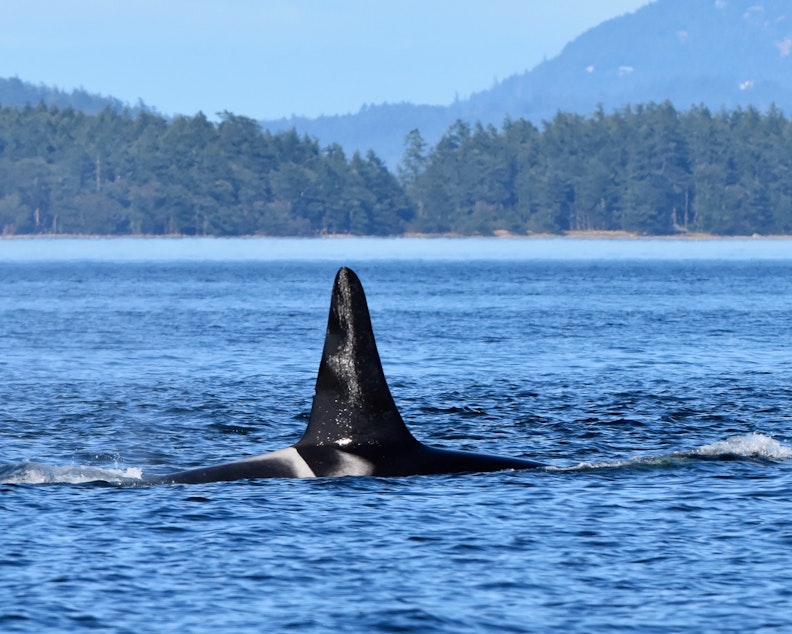Orcultural exchange: Orcas briefly visit Salish Sea after long absence

After more than 100 days with no local sightings, the Southern Resident orcas were spotted in the Salish Sea last week.
But they didn't stay for long. This lone visit — during what is typically peak whale-watching season — is more concerning than exciting for some observers.
That's due, in part, to the presumed death of one beloved whale, known as Cappuccino.
The Orca Behavior Institute says at least 50 whales from the J, K, and L pods, including the youngest calf born earlier this year, were seen heading south toward Eagle Point in the San Juan Islands.
Institute Director Monika Wieland Shields says, essentially, the pods got together for their version of a barbeque. They were active and happily socializing.
From the shore, Wieland Shields says the whales seemed healthy, energized and grouped close together as they breached the waters and twirled through the air.
Of course, she and her colleagues were excited to see members of all three resident pods again. But the pods didn't stay long, because there wasn't much to eat at this party. Wieland Shields notes the orcas weren't spread out and preoccupied with finding food during this visit — a sign that they're finding food elsewhere.
"These guys, especially in the spring and summer, are focused on Chinook salmon returning to the Fraser River," Wieland Shields explains. "And as those numbers have declined, we've seen the whales needing to go elsewhere this time of year to find enough to eat."
The pods did gather in the area despite the salmon shortage because it's a meaningful location in the whales' culture, she says. Yes, whale culture — or rather, orc-ulture — is a thing.
Sponsored
Wieland Shields says the sighting was more of a visit than a true return of the orcas. Joy over the visit was quickly subdued when a commercial whale-watch vessel discovered a single orca in distress near Race Rocks. It was the well-known adult male K21, better known as Cappuccino.
According to a statement from the Orca Behavior Institute, Cappuccino — identifiable by his check-mark shaped patches and a notch in his tall dorsal fin — was emaciated and had a collapsed dorsal fin, which may indicate illness.
Photos posted on social media by the company that saw the whale did not reveal any visible injuries, but he was clearly malnourished.
“The average life expectancy of a male resident killer whale is about 30 years,” Wieland Shields said in a statement, noting Cappuccino is on the older side for an adult male at 35 years old. “It’s never easy to lose one of these whales, but it’s even worse when they aren’t living a complete life. K21 at least had that.”
Sponsored
Still it hurts to lose him, says Wieland Shields: "We think in all likelihood, Cappuccino is gone at this point."
Cappuccino was spotted Wednesday trailing several miles behind the rest of his pod and making slow progress against the strong current.
There are times when whales try to aid a sick or injured comrade. And there are other times when they seem to abandon them," Wieland Shields says; in this "heartbreaking" case, Cappuccino was left behind by his pod.
The orcas use their annual gathering to breed and even mourn their dead together, she adds.
“We will never know for sure why they all came here now, or how they made the decision of whether or not to be with K21 at this time,” she says. “While there are many similarities between us and them, whale culture is not human culture. I trust them to handle these difficult moments in the way that is right for them.”
The Southern Resident killer whales are endangered, with just 74 whales now left in the population.
On Friday, the federal government agreed to expand the critical habitat of the whales.
The National Marine Fisheries Service finalized rules to expand the Southern Resident orcas' habitat by nearly 16,000 square miles.
It will now run from the Canadian border down to Point Sur, California.
The habitat is meant to provide healthy foraging areas, river mouths and migratory pathways.
While environmentalists praised the action, many also called for habitat protections for salmon to aid in their recovery.






